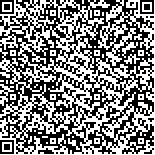投稿时间:2024-04-08
修订日期:2025-03-24
网络发布日期:2025-07-01
中文摘要:湖南观音堂锑矿位于雪峰弧形构造带内,以往勘查工作均围绕NE走向的矿脉展开,而对近期发现的NWW走向矿脉研究尚属空白。文章旨在综合新地质事实基础上阐明矿床地质特征及控矿因素,深化成矿规律认识,建立综合找矿模型,指导矿区深边部及外围锑矿勘探工作。文章针对区内地层、构造及矿体特征进行系统的野外调查,对成矿相关元素分析化验,综合分析其对成矿指示作用。调查研究显示,观音堂锑矿床赋矿地层主要为震旦系留茶坡组厚层硅质岩,金家洞组底部白云岩次之。矿石以辉锑矿为主,围岩蚀变类型包括褪色化、硅化、碳酸盐化、石墨化等。矿体分布严格受褶皱和断裂复合控制,轴向NE的宽缓背斜轴部及附近和NE、NWW向断裂为主要容矿空间。矿区内留茶坡组硅质岩Sb、Zn及金家洞组As、Sb、Pb、Zn元素存在明显富集特征;Sb与Cd、Zn元素具有良好亲缘性,共同构成最主要的指示元素,圈定出AS-1~AS-4共4个土壤元素组合异常。建立了硅质岩、白云岩赋矿,背斜轴部叠加NE/NWW断裂复合控矿,Sb高异常为指示的观音堂锑矿综合找矿模型。以上结果表明,观音堂锑矿为主要赋存于震旦系硅质岩中的典型裂隙充填型锑矿,褶皱和断裂叠加,尤其是与多期断裂叠加对锑矿勘查具有重要指导意义,良好的虚脱空间具有巨大的成矿潜力;Sb、Cd、Zn致矿元素异常组合对寻找锑矿具有良好指示作用;矿区北东部溜溪坑以及南东部的赔机冲背斜具有良好找矿远景。
Abstract:The Guanyintang antimony deposit is located within the Xuefeng Arc Structural Belt. All past exploration work has focused exclusively on NE-trending ore veins, while studies on the newly identified NWW-trending vein remain completely unstudied. This study aims to elucidate geological characteristics and ore-controlling factors of the deposit based on new emerging geological evidence, advance the understanding of metallogenic regularity, establish an integrated prospecting model, and guide antimony exploration in deep extensions and peripheral zones of the mining area. This investigation systematically conducted field surveys on stratigraphy, structures, and ore body characteristics within the study area, performed multi-element geochemical analysis of mineralization-related elements, and comprehensively integrated results to determine their prospecting significance. Research indicates that the host strata of the Guanyintang antimony deposit are primarily composed of thick-bedded chert from the Sinian Liuchapo Formation, with subordinate dolostone at the base of the Jinjia-dong Formation. The ore mineralization is dominated by stibnite, associated with wall-rock alterations including bleaching, silicification, carbonatization, and graphitization. Distribution of antimony orebodies is rigorously controlled by superimposed folding and faulting structures. The axial zones and periclines of broad, gentle NE-trending anticlines, along with NE-striking and NWW-striking fracture systems, constitute the principal hosting spaces. Within the mining area, distinct enrichment of Sb and Zn in the Liuchapo Formation siliceous rocks, as well as As, Sb, Pb, and Zn in the Jinjiadong Formation, has been identified. Sb exhibits strong geochemical consanguinity with Cd and Zn, jointly constituting the primary indicator suite. Four integrated geochemical anomalies (AS-1 to AS-4) have been delineated in soil surveys based on elemental associations. An integrated exploration model for the Guanyintang antimony deposit has been established, characterized by mineralization in siliceous rocks and dolomite, structural control through anticlinal axes superimposed by NE/NWW-trending faults, and Sb-high anomalies as the primary geochemical indicator. The results demonstrate that the Guanyintang antimony deposit represents a typical fissure-filling type mineralization predominantly hosted in Sinian siliceous rocks. The superimposition of folds and faults—particularly multiphase fault systems—provides critical guidance for Sb exploration, with dilational structural voids exhibiting unexpectedly high mineralization potential. The Sb-Cd-Zn pathfinder elemental association serves as a robust indicator for antimony prospecting. Additionally, the Liuxikeng area (northeast) and Peijichong anticline (southeast) constitute high-priority exploration targets.
keywords:structural control of mineralization geochemical anomaly characteristics prospecting model ore-prospecting potential Xuefeng arc structural belt
文章编号:
中图分类号:
文献标志码:
基金项目:本文得到中国地质调查局项目“湖南云台山地区1∶5万矿产地质调查”(编号:ZD20220308)、“湘东北平江-醴陵重点地区金多金属矿产资源调查评价”(编号:DD20230206511)和湖南省溆浦县大和矿业有限公司“湖南省溆浦县观音堂矿区锑矿勘查”联合资助
引用文本:
章志明,陈澍民,刘家军,黎长洲,韦少港,王明兴,吴金虹.2025.湖南观音堂锑矿床地质、地化异常特征及找矿远景分析[J].矿床地质,44(3):677~695ZHANG ZhiMing,CHEN ShuMin,LIU JiaJun,LI ChangZhou,WEI ShaoGang,WANG MingXing,WU JinHong.2025.Geological and geochemical anomaly characteristics and prospecting potential analysis of Guanyintang antimony deposit in Hunan Province[J].Mineral Deposits44(3):677~695
图/表

